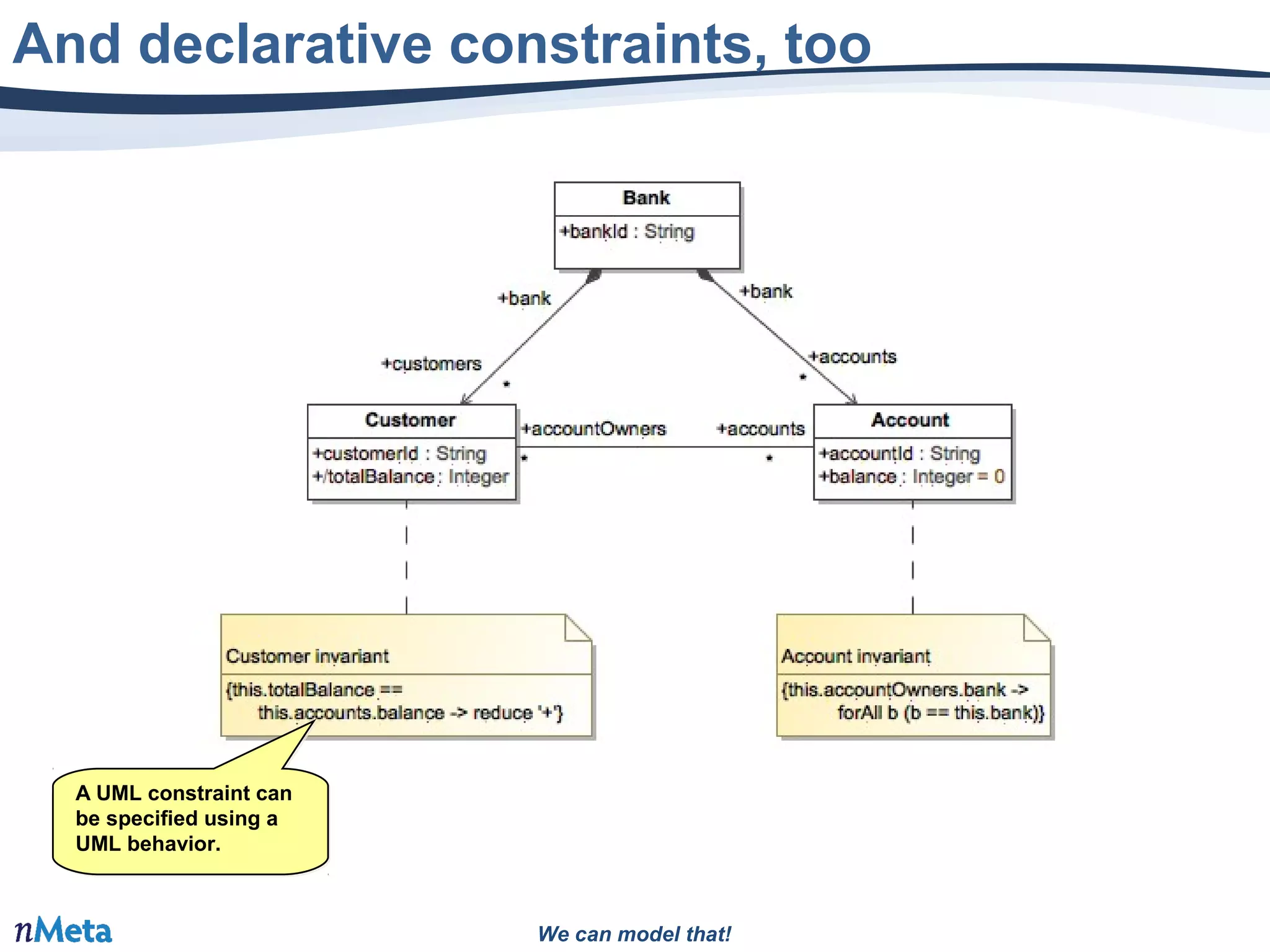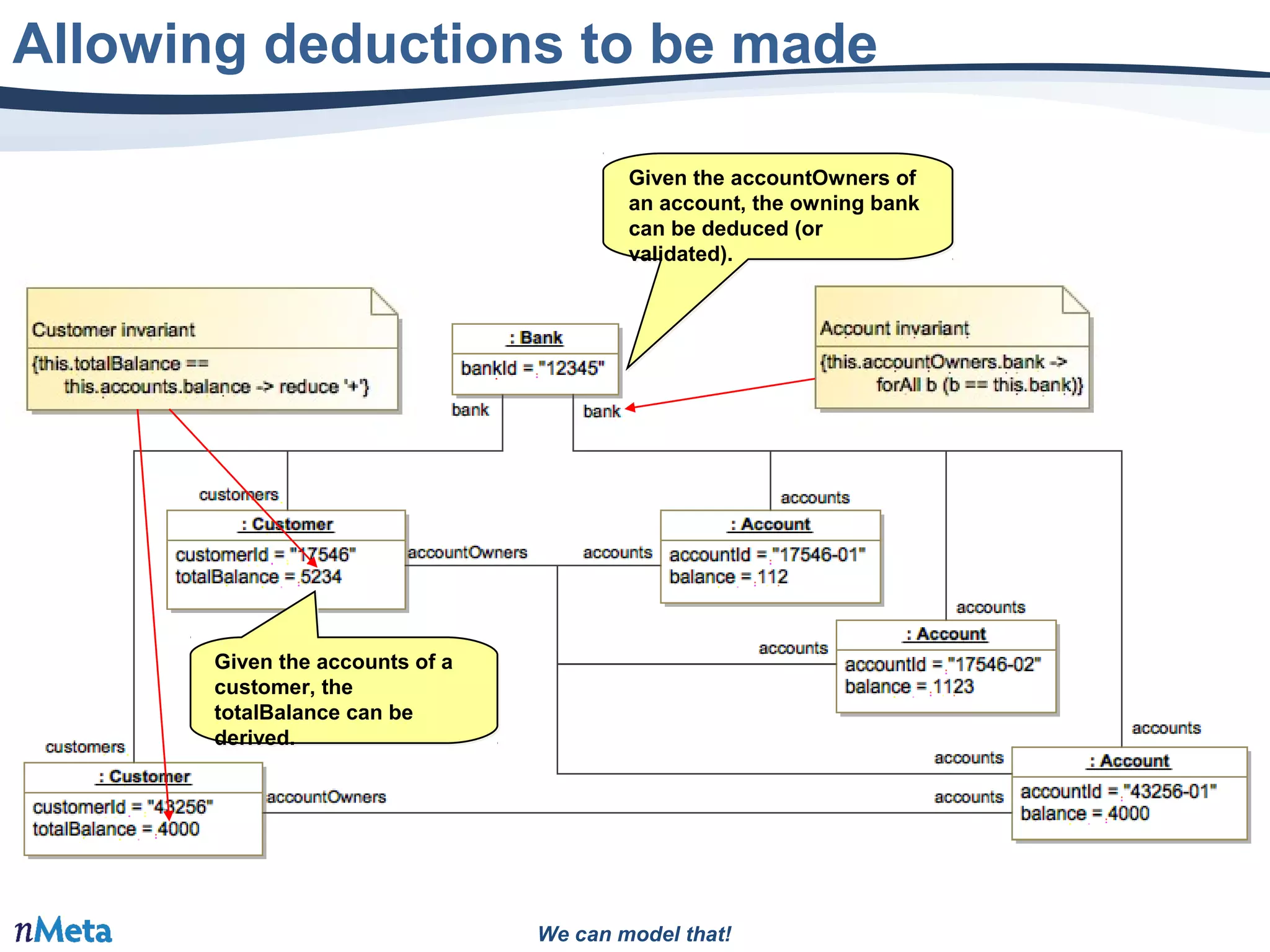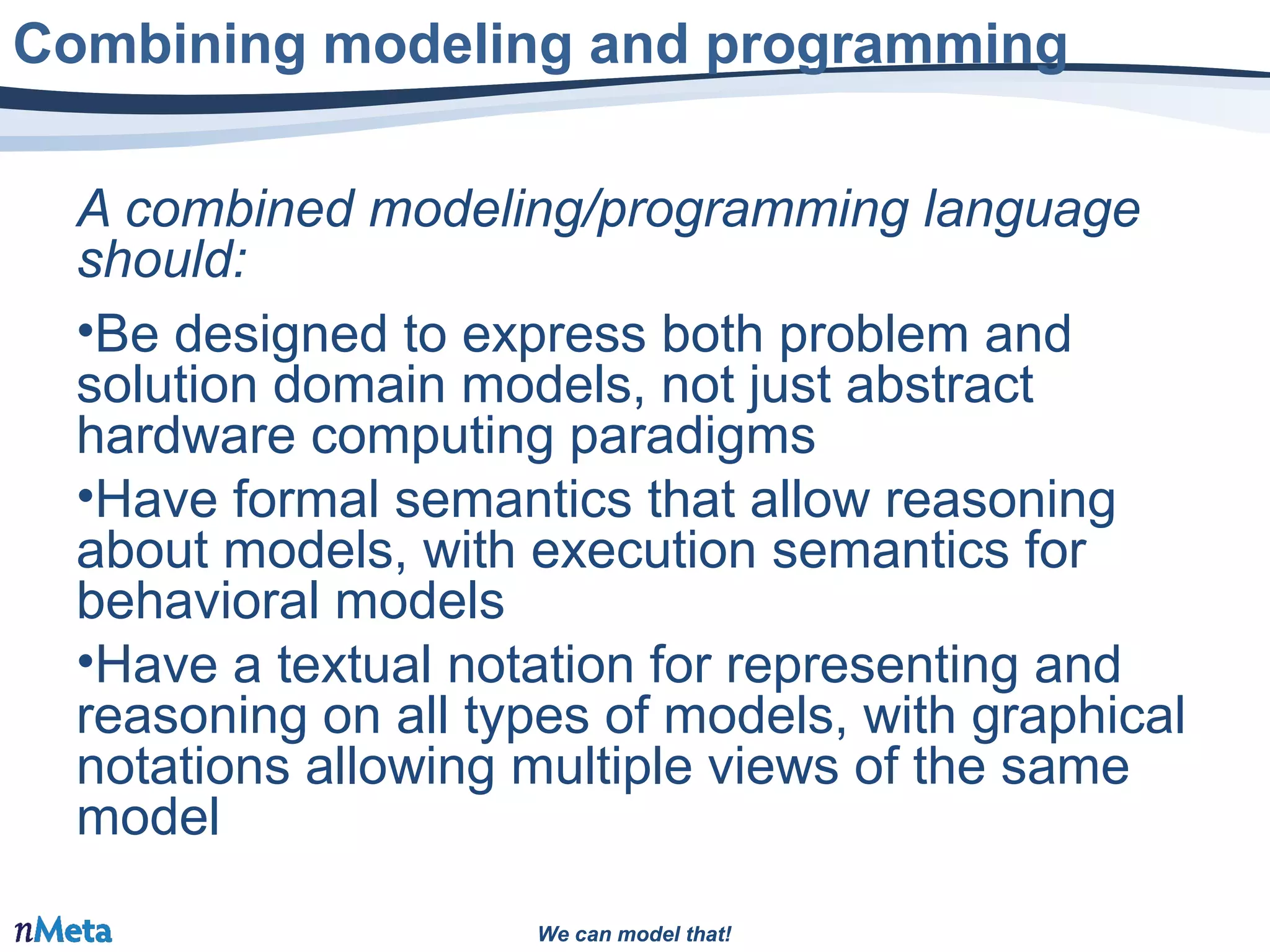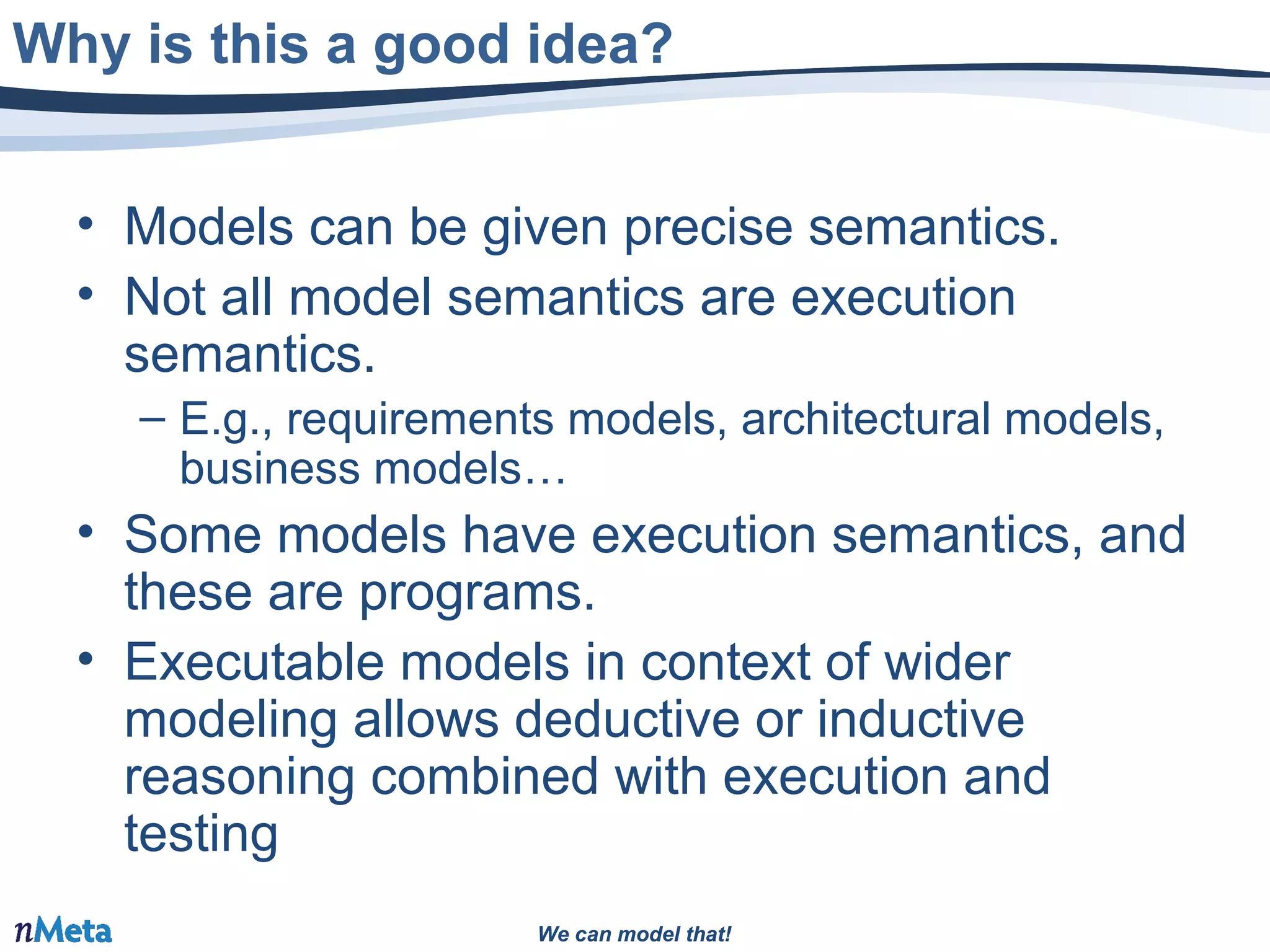The document discusses the unification of modeling and programming using executable UML. It argues that a program is a model of computation that is abstracted from implementation details, and that a programming language allows the creation of execution models. UML can be used for both domain modeling and executable modeling of computations through its precise execution semantics. A combined modeling/programming language should allow expression of problem and solution domain models with both formal semantics for reasoning and execution semantics for behavioral models, using both textual and graphical notations.
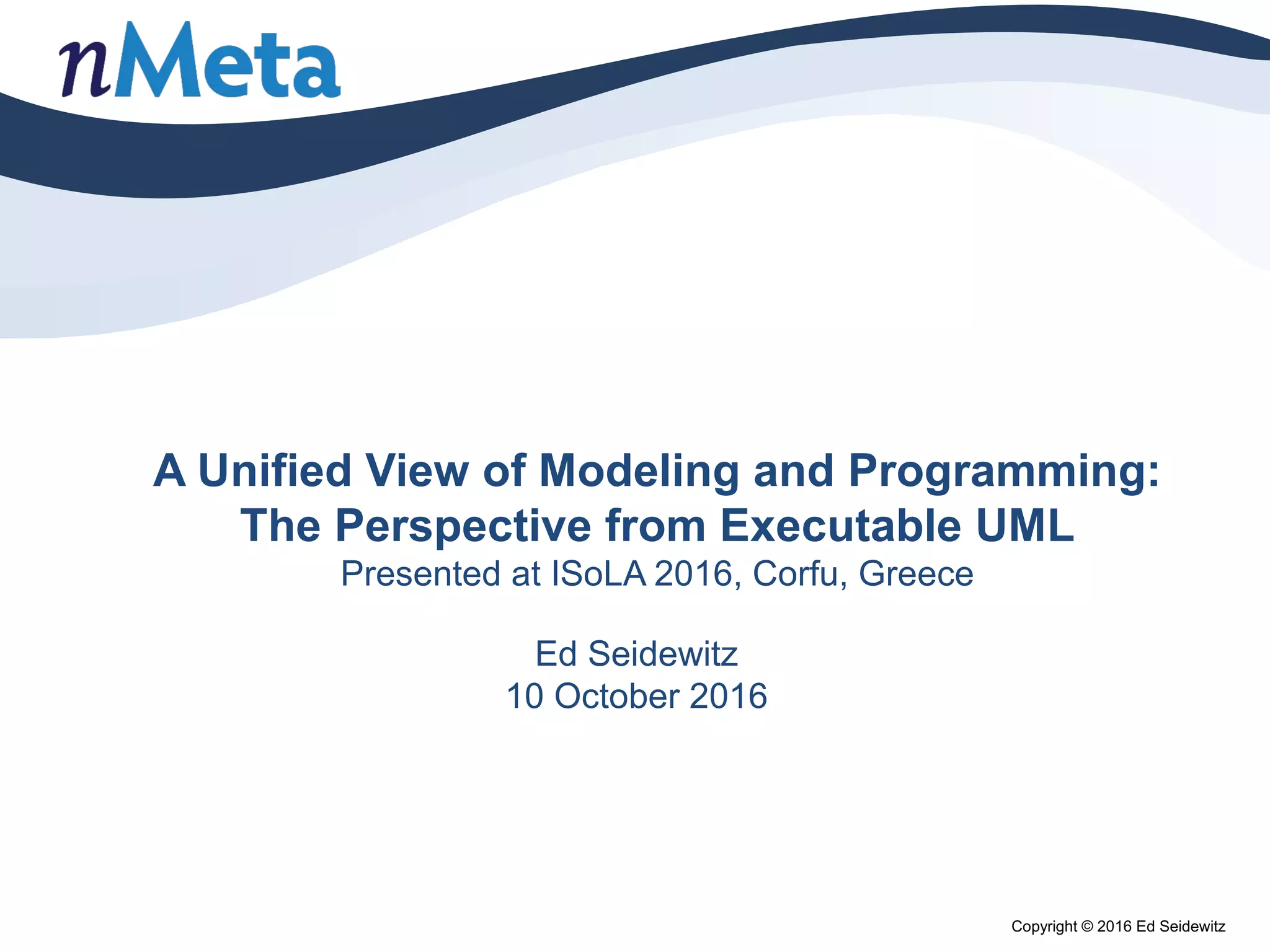
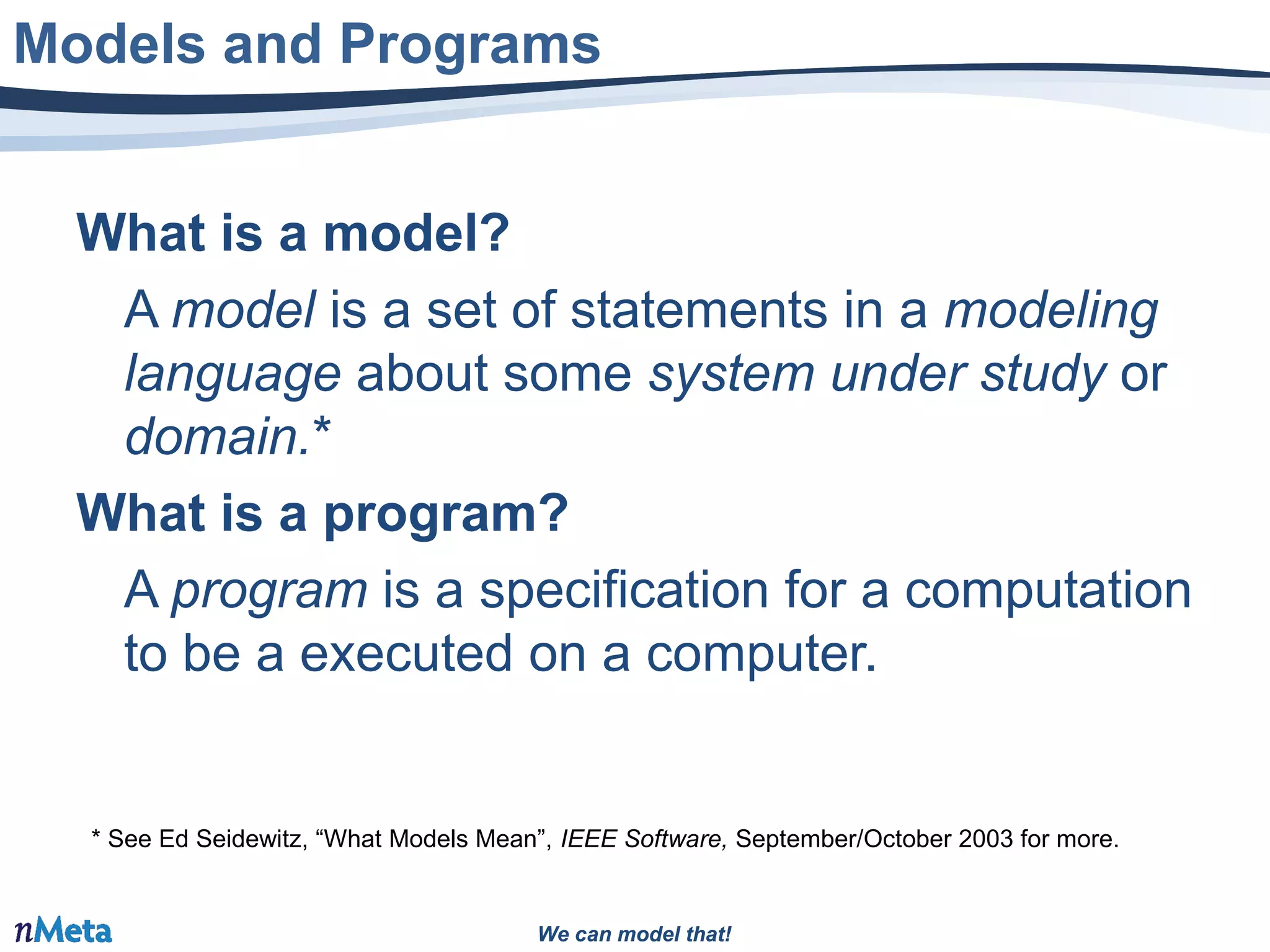
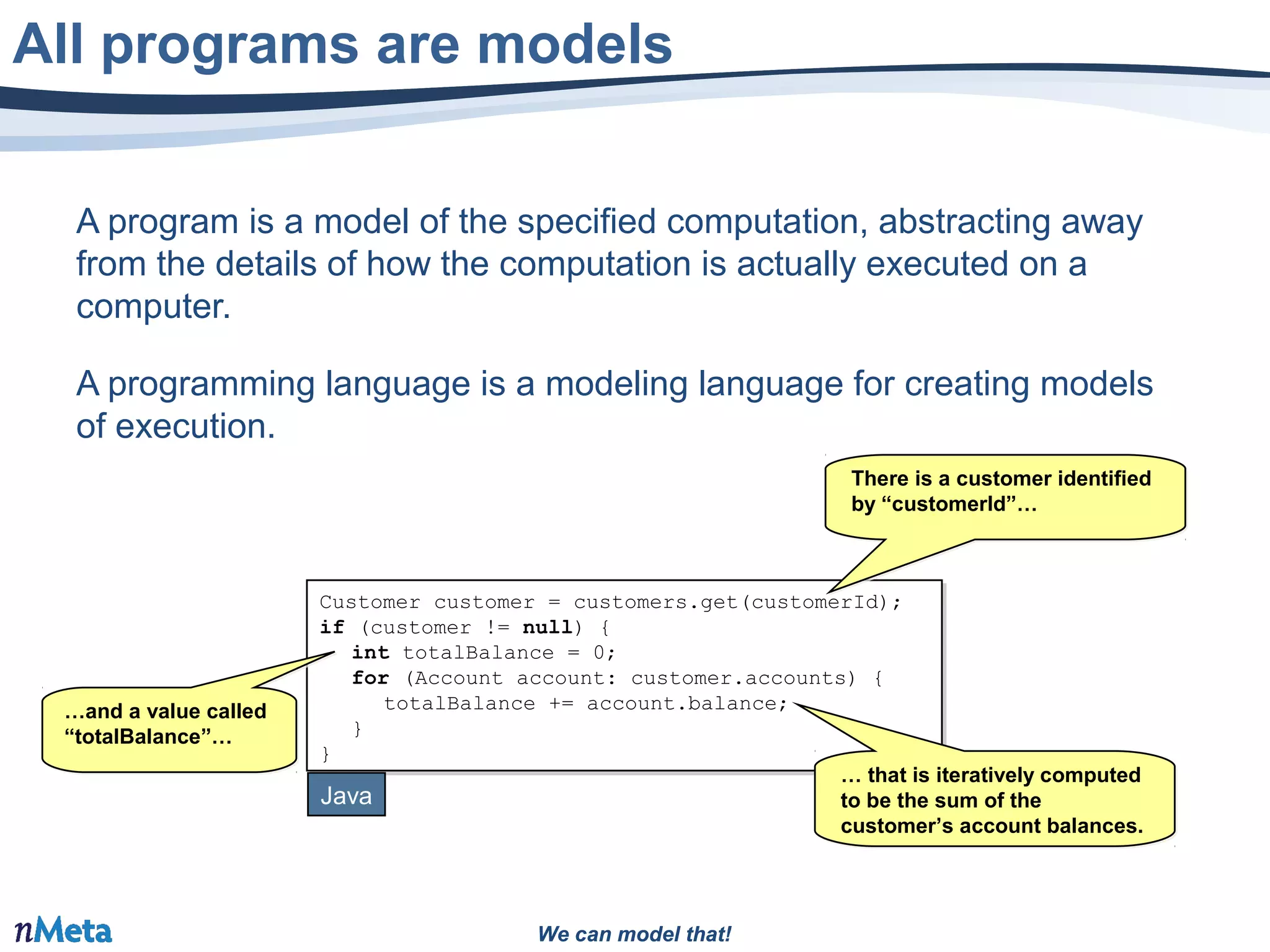
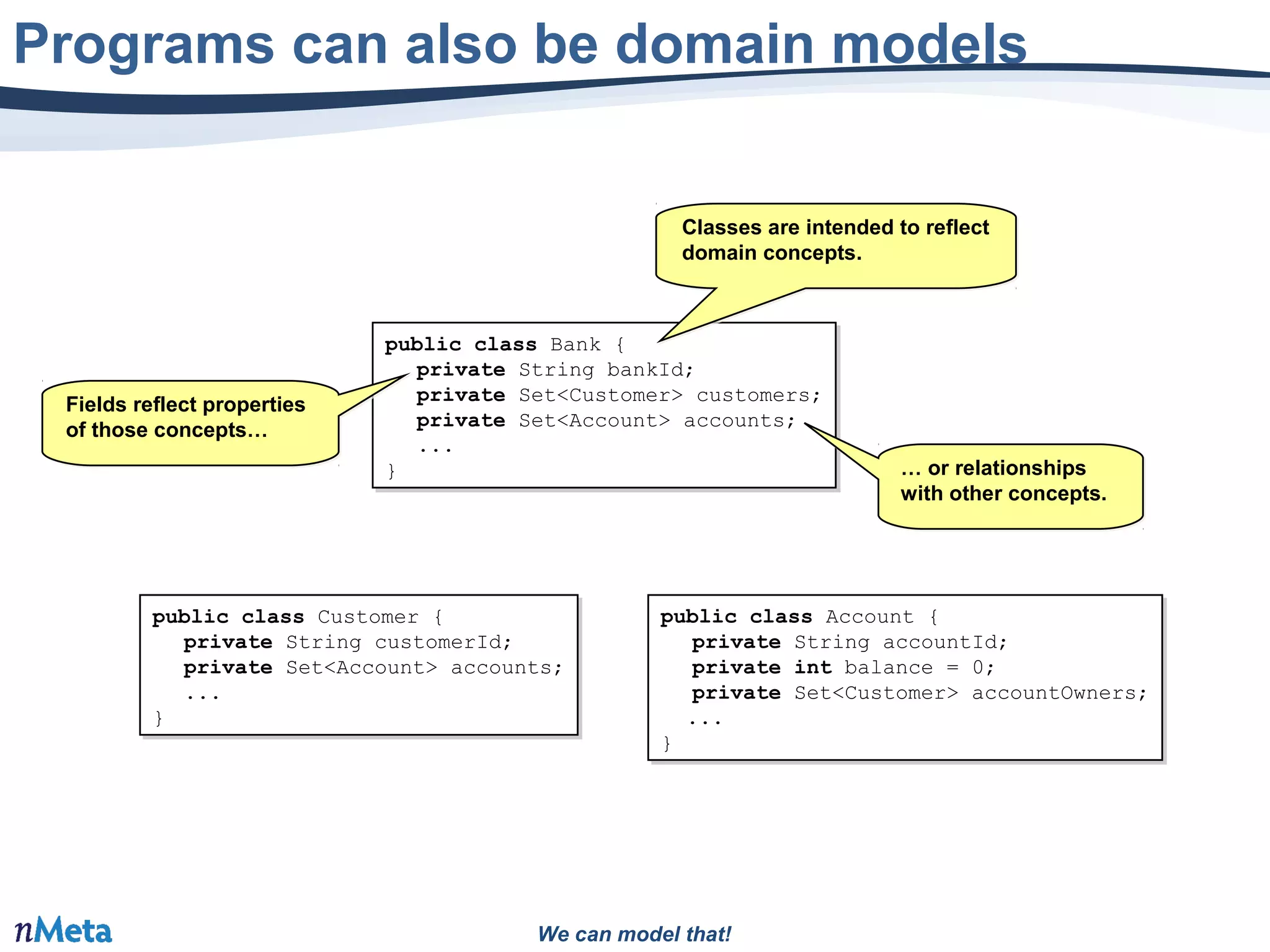
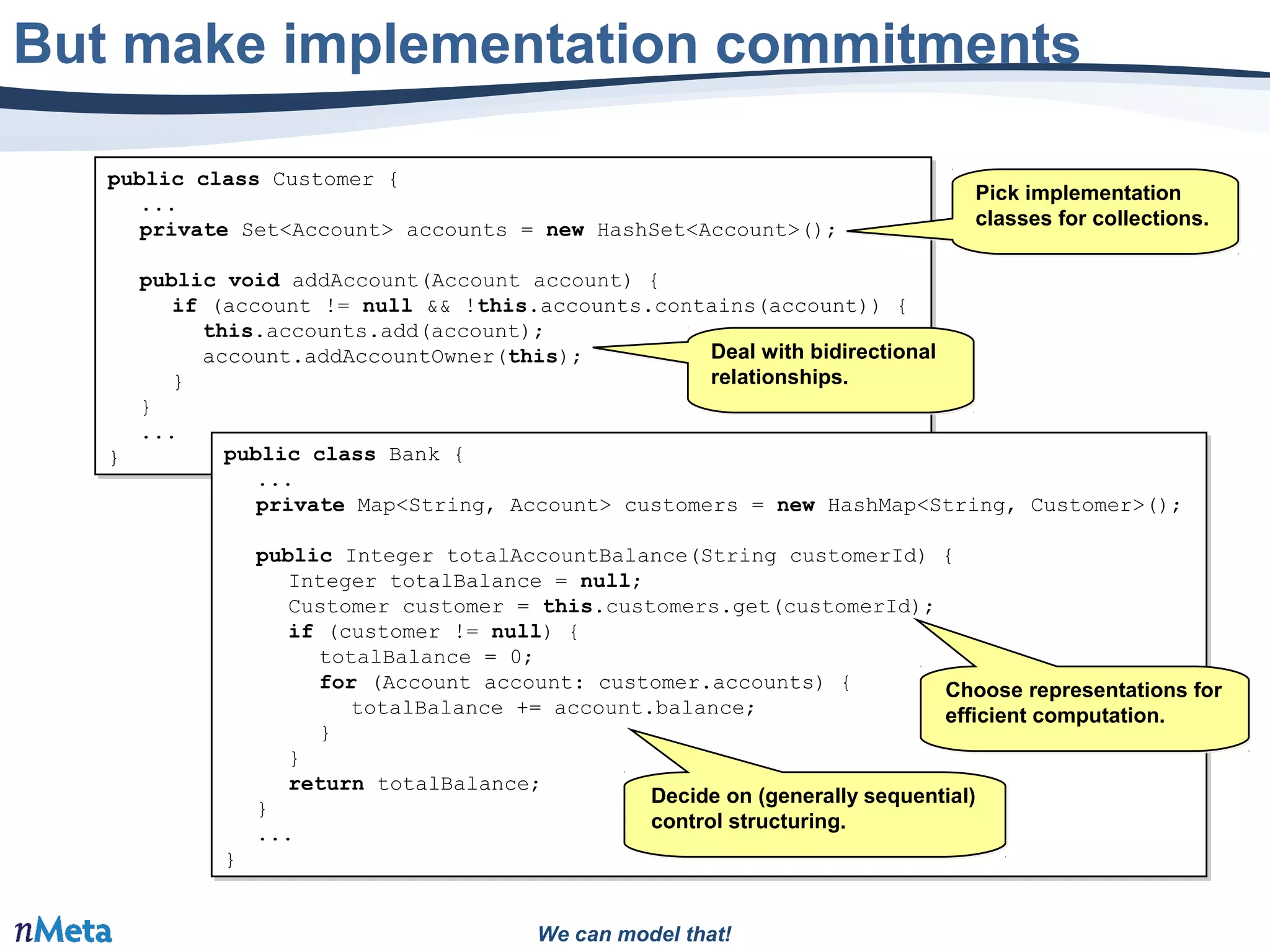
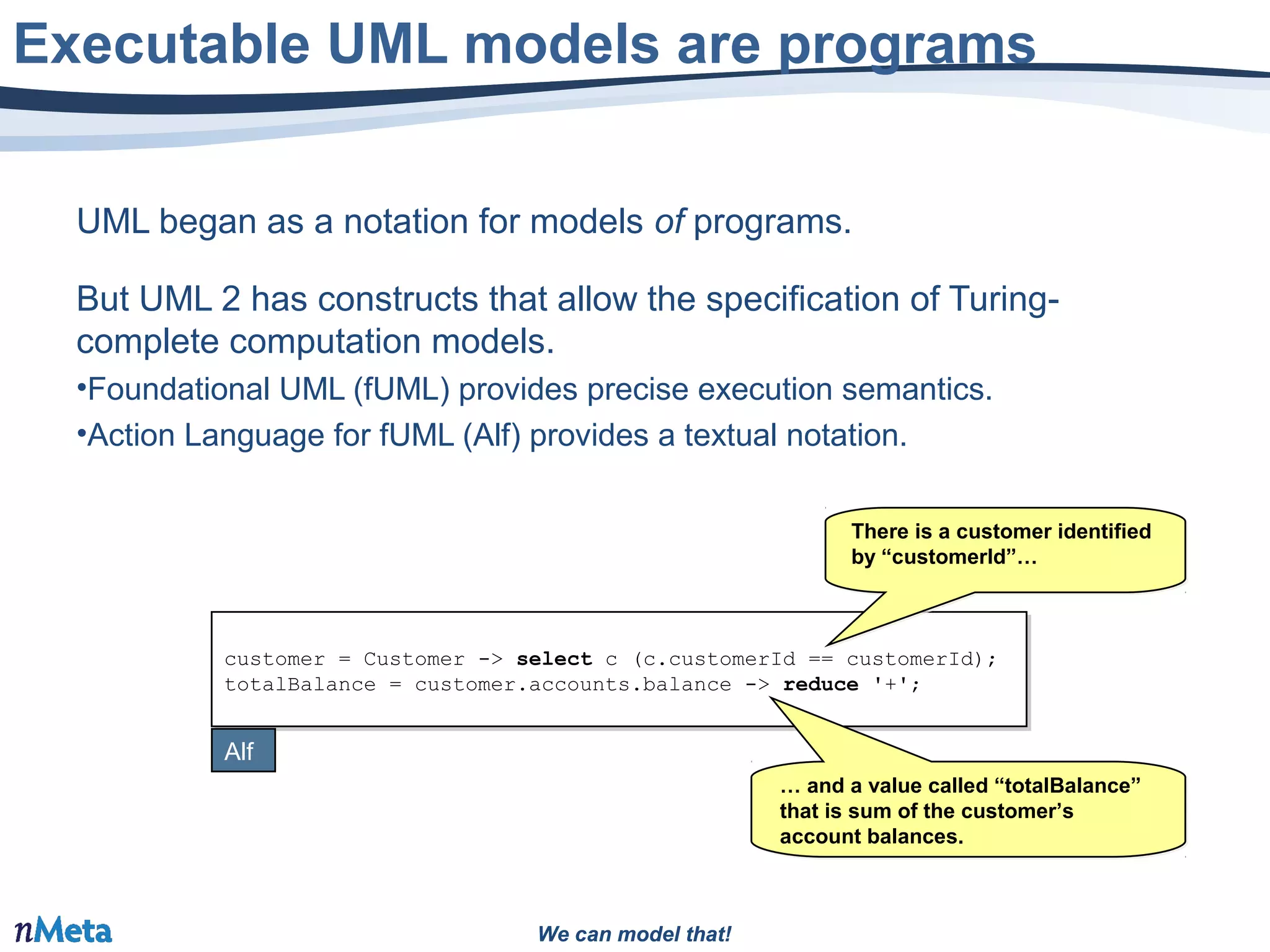
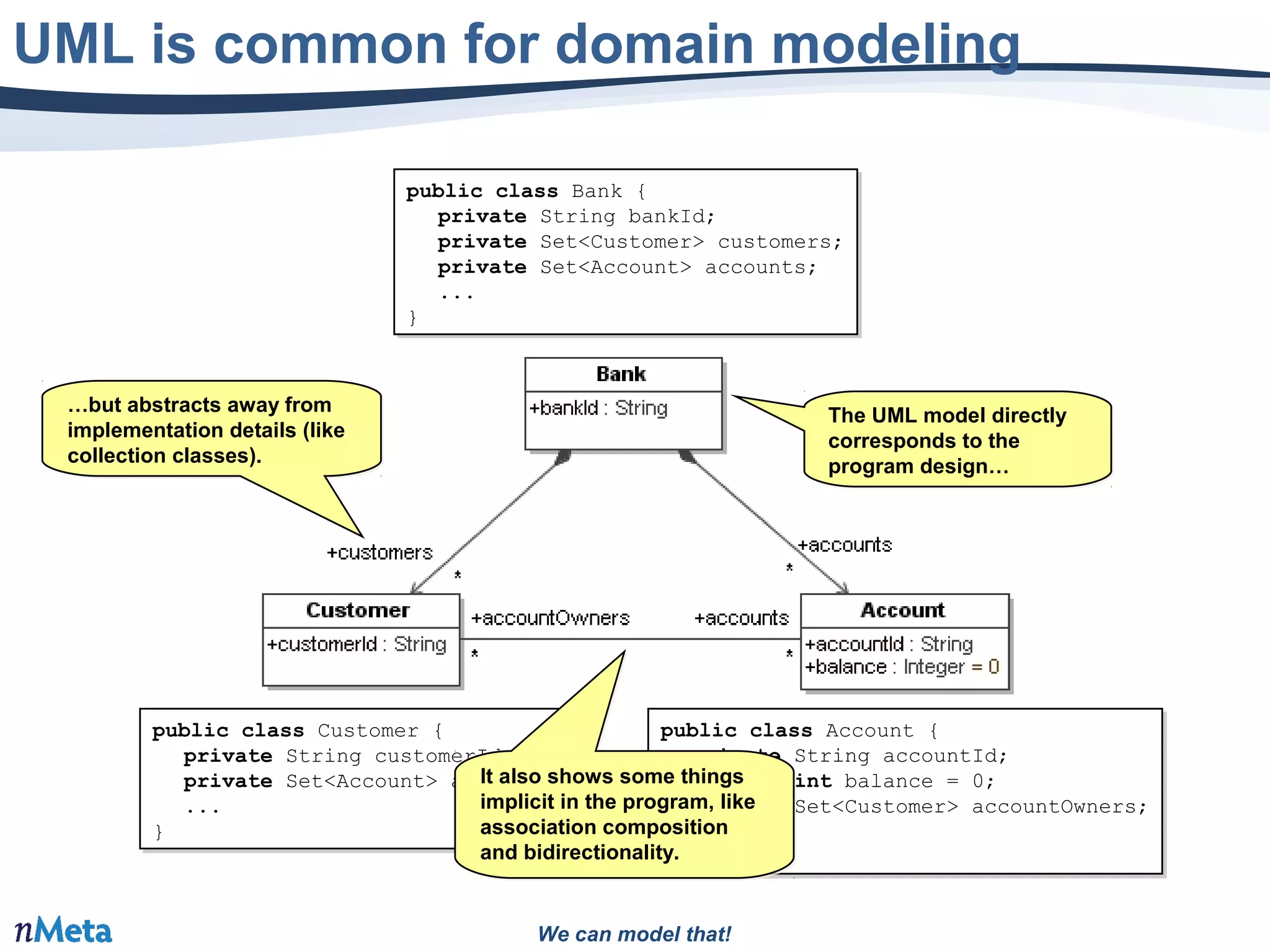
![We can model that!
But diagrams are just notation
class Bank {
public bankId: String;
public customers: compose Customer[*];
public accounts: compose Account[*];
}
class Bank {
public bankId: String;
public customers: compose Customer[*];
public accounts: compose Account[*];
}
assoc AccountOwnership {
public accountOwners: Customer[*];
public accounts: Account[*];
}
assoc AccountOwnership {
public accountOwners: Customer[*];
public accounts: Account[*];
} class Account {
public accountId: String;
public balance: Integer = 0;
}
class Account {
public accountId: String;
public balance: Integer = 0;
}
class Customer {
public customerId: String;
}
class Customer {
public customerId: String;
}
A UML class model has
semantics independent of its
mapping to any other language…
A UML class model has
semantics independent of its
mapping to any other language…
…which can be
notated textually as
well as graphically.
…which can be
notated textually as
well as graphically.](https://image.slidesharecdn.com/xumlpresentation161010unifiedmodelingandprogramming-161010073617/75/A-Unified-View-of-Modeling-and-Programming-8-2048.jpg)
![We can model that!
Computation can be modeled, too
class Bank {
public bankId: String;
public customers: compose Customer[*];
public accounts: compose Account[*];
public totalAccountBalance(in customerId: String): Integer[0..1] {
customer = this.customers -> select c (c.customerId == customerId);
return customer.accounts.balance -> reduce '+';
}
...
}
class Bank {
public bankId: String;
public customers: compose Customer[*];
public accounts: compose Account[*];
public totalAccountBalance(in customerId: String): Integer[0..1] {
customer = this.customers -> select c (c.customerId == customerId);
return customer.accounts.balance -> reduce '+';
}
...
} The underlying semantics are based
on data-flow, not an implicit von
Neumann architecture.
The underlying semantics are based
on data-flow, not an implicit von
Neumann architecture.
These actions are
inherently concurrent.
These actions are
inherently concurrent.
…with far fewer implementation
commitments.
…with far fewer implementation
commitments.](https://image.slidesharecdn.com/xumlpresentation161010unifiedmodelingandprogramming-161010073617/75/A-Unified-View-of-Modeling-and-Programming-9-2048.jpg)
